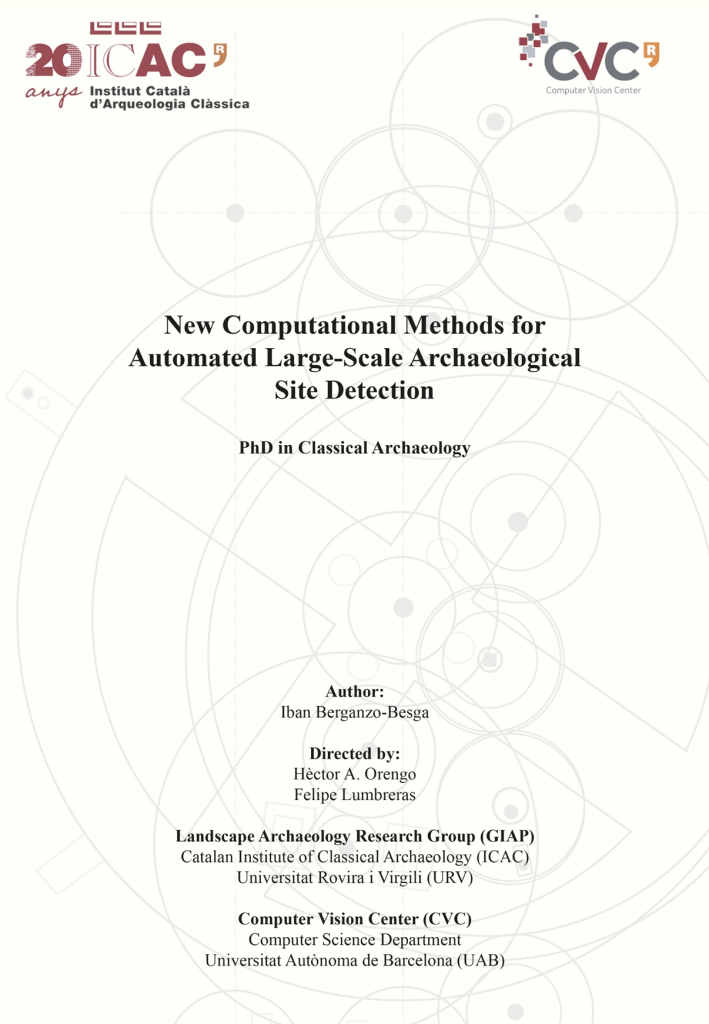Tarragona (plaça d'en Rovellat, s/n)
En el marc del programa de doctorat interuniversitari en Arqueologia Clàssica (URV-ICAC-UAB), ens plau convidar-vos a la lectura pública de la tesi doctoral de l’investigador predoctoral Iban Berganzo Besga, del grup de recerca GIAP, codirigida pel Dr. Hèctor A. Orengo (ICREA-ICAC) i el Dr. Felipe Lumbreras Ruiz ().
“New Computational Methods for Automated Large-Scale Archaeological Site Detection”.
L’acte de defensa es farà presencialment a la Sala d’Actes de l’ICAC, el divendres 10 de març de 2023 a partir de les 11.00 h.
Membres del tribunal:
- Dra. Rachel Opitz, Senior Lecturer a la Universitat de Glasgow (School of Humanities)
- Dr. Arnau Garcia Molsosa, investigador Ramón y Cajal a l’ICAC (secretari)
- Dr. Robert Benavente, professor associat al Centre de Visió Computacional (CVC) de la Universitat Autònoma de Barcelona (vocal titular)
Abstract
This doctoral thesis presents a series of innovative approaches, workflows and models in the field of computational archaeology for the automated large-scale detection of archaeological sites. New concepts, approaches and strategies are introduced such as multitemporal lidar, hybrid machine learning, refinement, curriculum learning and blob analysis; as well as different data augmentation methods applied for the first time in the field of archaeology.
Multiple sources are used, such as lidar, multispectral satellite imagery, RGB photographs from UAV platform, historical maps, and several combinations of sensors, data, and sources. The methods created during the development of this PhD have been evaluated in ongoing projects: Urbanization in Iberia and Mediterranean Gaul in the First Millennium BC, Detection of burial mounds using machine learning algorithms in the Northwest of the Iberian Peninsula, Drone-based Intelligent Archaeological Survey (DIASur), and Mapping Archaeological Heritage in South Asia (MAHSA), for which workflows adapted to the project’s specific challenges have been designed.
These new methods have managed to provide solutions to common archaeological survey problems, presented in similar large-scale site detection studies, such as the low precision achieved in previous detection studies and how to handle problems with little amount of training data. The validated approaches for site detection presented as part of the PhD have been published as open access papers with freely available code so can be implemented in other archaeological studies.
Likewise, this doctoral thesis has contributed to the development of a Computational Archaeology Laboratory, which has allowed us to build these models, with which large amounts of data, never before achieved in archaeological site detection studies or survey work, have been obtained. To sum up, this PhD presents a comprehensive guide on the design, application and validation of methods for automated large-scale archaeological site detection within the field of computational archaeology.







